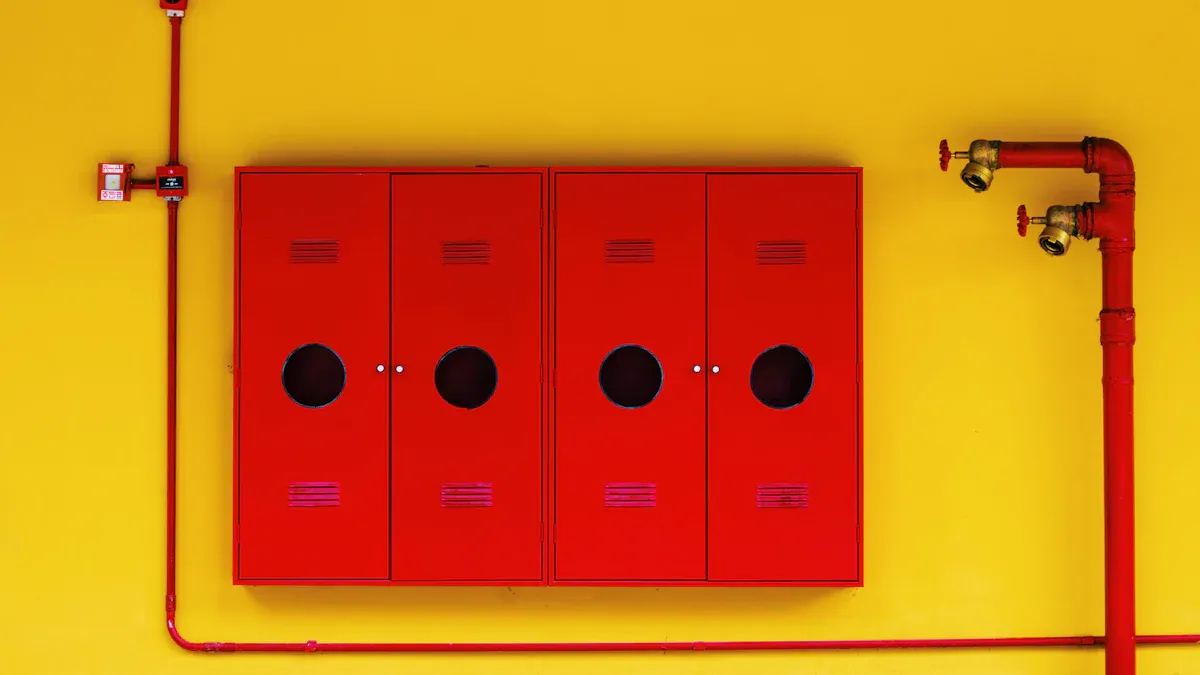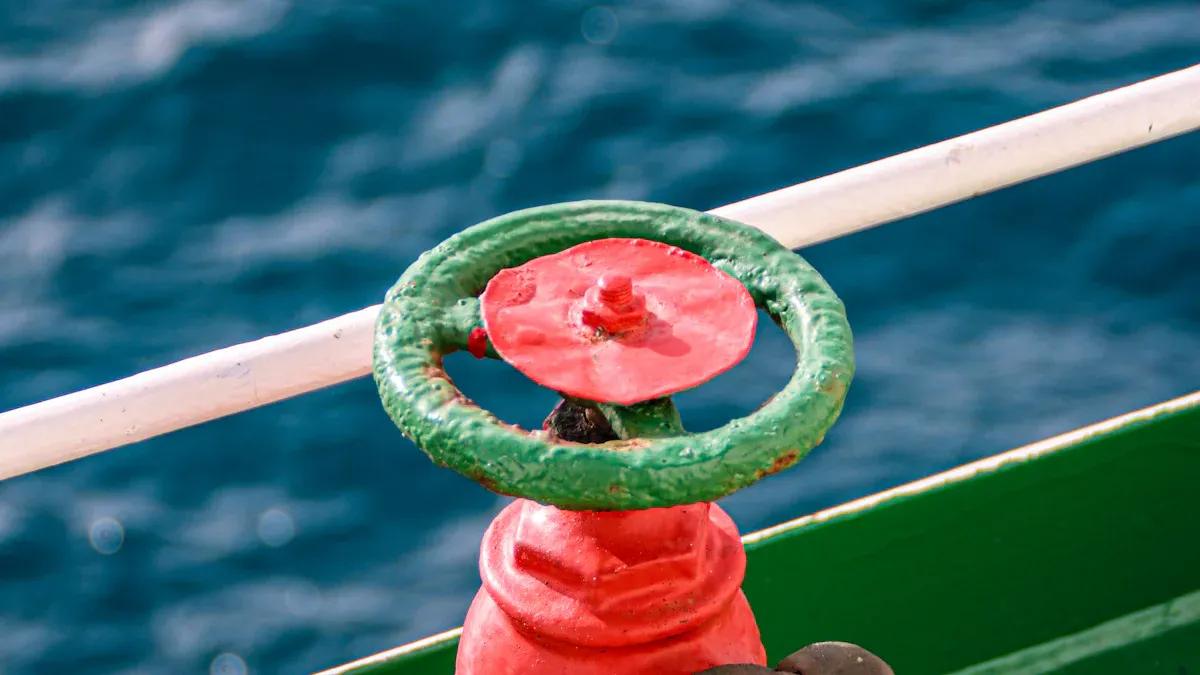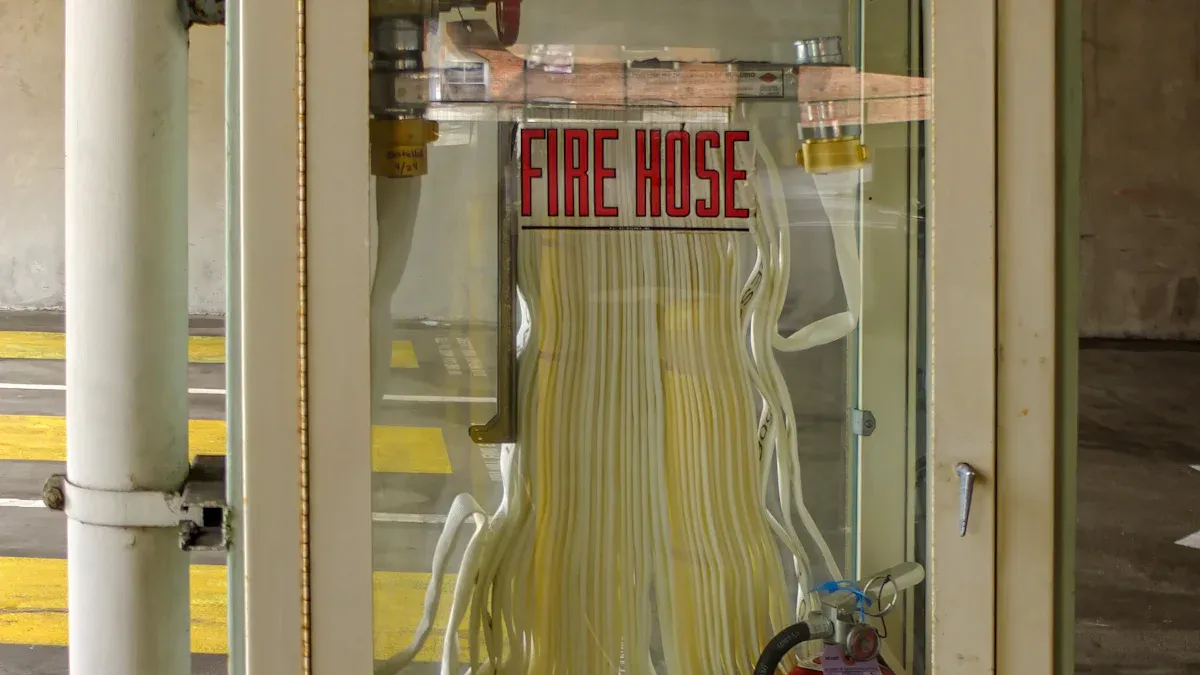
When you open a fire hose cabinet, you will see a Landing Valve With Cabinet. This device lets you control water flow quickly during a fire emergency. You can turn the valve to release water, giving firefighters or trained people a strong water supply. Some valves, like the Coupling Landing Valve, help connect hoses fast. If you want to know about the Landing Valve With Cabinet price, you can check with safety equipment suppliers.
Key Takeaways
- The landing valve in a fire hose cabinet lets you quickly control water flow to fight fires inside buildings.
- You connect a fire hose to the valve and turn its handle to adjust water pressure based on the fire size.
- Landing valves are placed inside buildings near exits, stairwells, or hallways for fast and easy access during emergencies.
- These valves use strong materials like brass and stainless steel to resist damage and ensure reliable operation.
- Regular checks and proper use of landing valves help keep buildings safe and meet fire safety rules.
How a Landing Valve With Cabinet Works

Operation During Fire Emergencies
When a fire breaks out, you need fast access to water. You open the fire hose cabinet and find the Landing Valve With Cabinet inside. You attach the fire hose to the valve. You turn the wheel or handle to open the valve. Water flows out quickly and fills the hose. This process lets you or firefighters start fighting the fire right away.
Tip: Always check that the hose is tightly connected before opening the valve. This helps prevent leaks and ensures strong water pressure.
Controlling and Regulating Water Flow
You control the water flow by turning the valve handle. If you turn it more, you get a stronger stream of water. If you turn it less, you reduce the flow. This control helps you manage the fire better. You can adjust the water pressure to match the size of the fire. The Landing Valve With Cabinet gives you this flexibility, making it easier to handle different emergency situations.
Here is a simple table showing how the valve position affects water flow:
| Valve Position | Water Flow |
|---|---|
| Fully Open | Maximum |
| Half Open | Medium |
| Slightly Open | Low |
| Closed | None |
Role in Firefighting Response
The Landing Valve With Cabinet plays a key role in fire safety. You use it to get water inside buildings where outside hydrants may not reach. Firefighters rely on these valves to connect hoses quickly and start fighting fires without delay. You help protect people and property by using the valve correctly. The valve also supports building safety plans and helps meet fire safety rules.
Note: Regular checks and maintenance keep the valve ready for emergencies. You should report any damage or leaks to building management right away.
Landing Valve With Cabinet vs. Other Fire Safety Devices
Difference from Fire Hydrants
You might wonder how a Landing Valve With Cabinet is different from a fire hydrant. Both give you access to water during a fire, but they serve different purposes. You find fire hydrants outside buildings, usually along streets or in parking lots. Firefighters connect hoses to hydrants to get water from the main supply.
A Landing Valve With Cabinet sits inside a building. You use it when you need water on upper floors or in places far from outdoor hydrants. This valve connects to the building’s internal water system. You do not need to run hoses from outside. This saves time and helps you fight fires faster inside the building.
Note: Fire hydrants help with large fires outside, while landing valves help you fight fires inside buildings.
Comparison with Other Valves
You may see other types of valves in fire protection systems, such as gate valves or ball valves. These valves control water flow in pipes, but you do not use them directly during a fire emergency.
The Landing Valve With Cabinet is special because you can open it quickly and connect a fire hose right away. It has a design that lets you control water flow easily, even under high pressure. Other valves might need tools or take longer to operate.
Here is a quick comparison:
| Feature | Landing Valve With Cabinet | Gate Valve | Ball Valve |
|---|---|---|---|
| Location | Inside fire hose cabinet | In pipes | In pipes |
| Use in Emergency | Yes | No | No |
| Hose Connection | Direct | Not direct | Not direct |
| Operation Speed | Fast | Slow | Medium |
If you want fast water access during a fire, you should use the landing valve, not other types of valves.
Placement and Installation of Landing Valve With Cabinet

Typical Locations in Buildings
You often find a Landing Valve With Cabinet in places where people gather or work. Building designers place these valves in spots that give you quick access during a fire. You might see them in:
- Hallways on each floor of an apartment building
- Near staircases or fire exits
- Parking garages
- Large shopping malls
- Hospitals and schools
You can spot these cabinets mounted on walls, usually at a height that lets you reach them easily. Some buildings have more than one cabinet on each floor. This setup helps you get water fast, no matter where a fire starts.
Tip: Look for the red cabinet with a glass front or a clear label. This helps you find the Landing Valve With Cabinet quickly in an emergency.
Importance of Proper Placement
Proper placement of the valve matters for your safety. If you put the cabinet in the wrong spot, you might waste time during a fire. You need to reach the valve without moving through smoke or flames. Good placement means you can connect the hose and start using water right away.
Here is a simple checklist for proper placement:
| Placement Rule | Why It Matters |
|---|---|
| Near exits or stairwells | Easy escape and quick access |
| Visible and not blocked | Saves time in emergencies |
| At a reachable height | Anyone can use it |
| On every floor | Covers the whole building |
You help everyone stay safe when you follow these rules. Building codes often require you to install the valve in certain spots. Always check local fire safety rules before you install a Landing Valve With Cabinet.
Materials and Construction of Landing Valve With Cabinet
Common Materials Used
You will find that manufacturers use strong and reliable materials for fire safety equipment. Brass is a popular choice for the valve body. Brass resists corrosion and handles high water pressure well. Some valves use gunmetal, which is also tough and long-lasting. Stainless steel appears in some parts because it does not rust easily. For the cabinet, you often see powder-coated steel or stainless steel. These materials protect the cabinet from damage and keep it looking clean.
Here is a table showing common materials and their benefits:
| Material | Where Used | Benefit |
|---|---|---|
| Brass | Valve body | Corrosion resistance |
| Gunmetal | Valve body | High strength |
| Stainless Steel | Valve/cabinet | Rust resistance |
| Powder-coated Steel | Cabinet | Scratch protection |
Tip: Always check the label or manual to know what materials your fire safety equipment uses.
Features for Durability and Safety
You want your fire safety equipment to last and work well during emergencies. Manufacturers design valves with thick walls to handle strong water pressure. The handle or wheel feels sturdy so you can open it quickly. Some cabinets have locks or seals to keep out dust and tampering. You may notice rubber gaskets inside the valve. These gaskets stop leaks and help keep water pressure steady.
Look for these features when you inspect your equipment:
- Smooth handle movement for easy operation
- Clear labels for fast identification
- Rust-proof coating on the cabinet
- Secure mounting to the wall
Regular checks help you spot damage early. Report any cracks, rust, or leaks to building management right away. This keeps your fire safety system ready for action.
Importance of Landing Valve With Cabinet in Building Safety
Contribution to Fire Protection Systems
You play a big part in keeping your building safe when you use the right fire protection tools. The landing valve in a fire hose cabinet gives you fast access to water during a fire. This tool helps you stop small fires before they grow. Firefighters also depend on these valves to connect their hoses quickly. You help protect people, property, and important equipment by making sure the valve works well.
Here are some ways the landing valve supports fire safety:
- You get water on every floor, not just near the ground.
- You can reach the valve in hallways, stairwells, or near exits.
- You help firefighters save time because they do not need to run hoses from outside.
Tip: Check the valve often. A working valve can make a big difference in an emergency.
Compliance with Safety Standards
You must follow fire safety rules in your building. Many local and national codes require you to install fire hose cabinets with landing valves. These rules help keep everyone safe. If you do not follow them, you may face fines or other problems.
A simple table shows why compliance matters:
| Reason for Compliance | What It Means for You |
|---|---|
| Legal requirement | Avoids penalties |
| Better fire protection | Keeps people safer |
| Insurance approval | May lower costs |
You should always check the latest safety standards for your area. When you follow these rules, you help your building pass inspections and stay ready for emergencies.
Note: Ask a fire safety expert if you are not sure about the rules. They can help you meet all requirements.
You play a key role in building fire safety when you understand how to use fire hose cabinets. Quick access to water during emergencies can save lives and property. You should check that each valve works and stays in good condition. Regular inspections help you follow safety rules and keep everyone safe. Remember to report any problems right away.
FAQ
What should you do if you find a damaged landing valve?
You should report the damage to building management right away. Do not try to fix it yourself. Quick reporting helps keep everyone safe during emergencies.
How often should you check the landing valve in a fire hose cabinet?
You should check the landing valve at least once every month. Regular checks help you spot leaks, rust, or other problems before an emergency happens.
Can you use the landing valve without training?
You should get basic training before using the landing valve. Training helps you connect the hose and control water flow safely. Ask your building manager for a demonstration.
What happens if the landing valve leaks?
Leaks can lower water pressure and make the valve less effective. You should report leaks immediately. Maintenance teams can fix the problem and keep the system ready for emergencies.
Is the landing valve the same as a fire hydrant?
No, you find landing valves inside buildings. Fire hydrants stay outside. You use landing valves for indoor firefighting. Firefighters use hydrants to get water from the main supply outside.
Post time: Jun-20-2025

